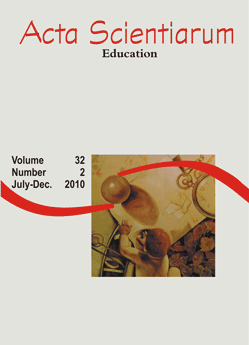<b>Children’s art exhibitions: modern bagde for the construction of a new human being</b> - doi: 10.4025/actascieduc.v32i2.9777
Abstract
Children's art exhibitions between the 1940s and 1960s as a strategy for asserting the importance of Art in educating and developing a child's personality are analyzed. Sources comprised newspaper articles, pictures, children's drawings, reports and other institutional documents. Early 20th century artistic vanguards which advocated the artist's self-expression and the acknowledgement of child specificities by Psychology and Pedagogy enhanced the defense of the child's freedom of artistic expression and the renewal of the concept of Art and Education during that period. From the mid-1940s children's art was focused upon by UNESCO since it represented an integration and fraternity potential among peoples and the desire to construct a renewed human being. Exhibitions were the vehicles for several discourses on the importance of children's art. Within the Brazilian context, Governmental agencies, national newspapers and private companies started to become involved in this factor. Whereas the above mentioned discourses involved the consolidation of an educational behavior based on the unrestricted freedom of children's creative spirit, contrastingly they supported a censorship of themes which were considered unsuitable, such as violence and war, and the need to follow a pre-defined esthetic standard.
Downloads

This work is licensed under a Creative Commons Attribution 4.0 International License.
DECLARATION OF ORIGINALITY AND COPYRIGHTS
I declare that this article is original and has not been submitted for publication in any other national or international journal, either in part or in its entirety.
The copyright belongs exclusively to the authors. The licensing rights used by the journal are the Creative Commons Attribution 4.0 (CC BY 4.0) license: sharing (copying and distributing the material in any medium or format) and adaptation (remixing, transforming, and building upon the material thus licensed for any purpose, including commercial purposes) are permitted.
It is recommended that you read this link for more information on the subject: providing credits and references correctly, among other crucial details for the proper use of the licensed material.













































